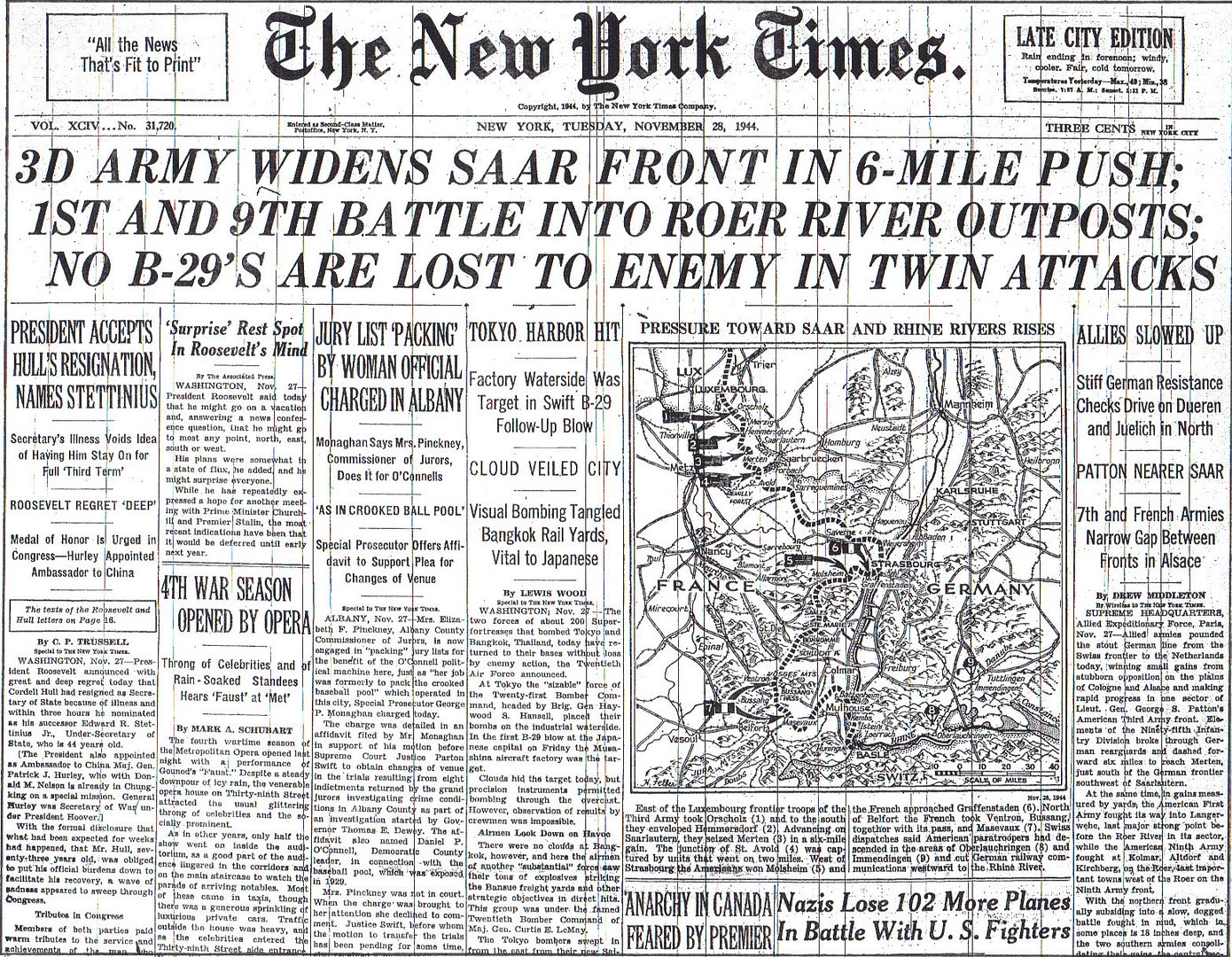
Posted on 11/28/2014 4:20:08 AM PST by Homer_J_Simpson

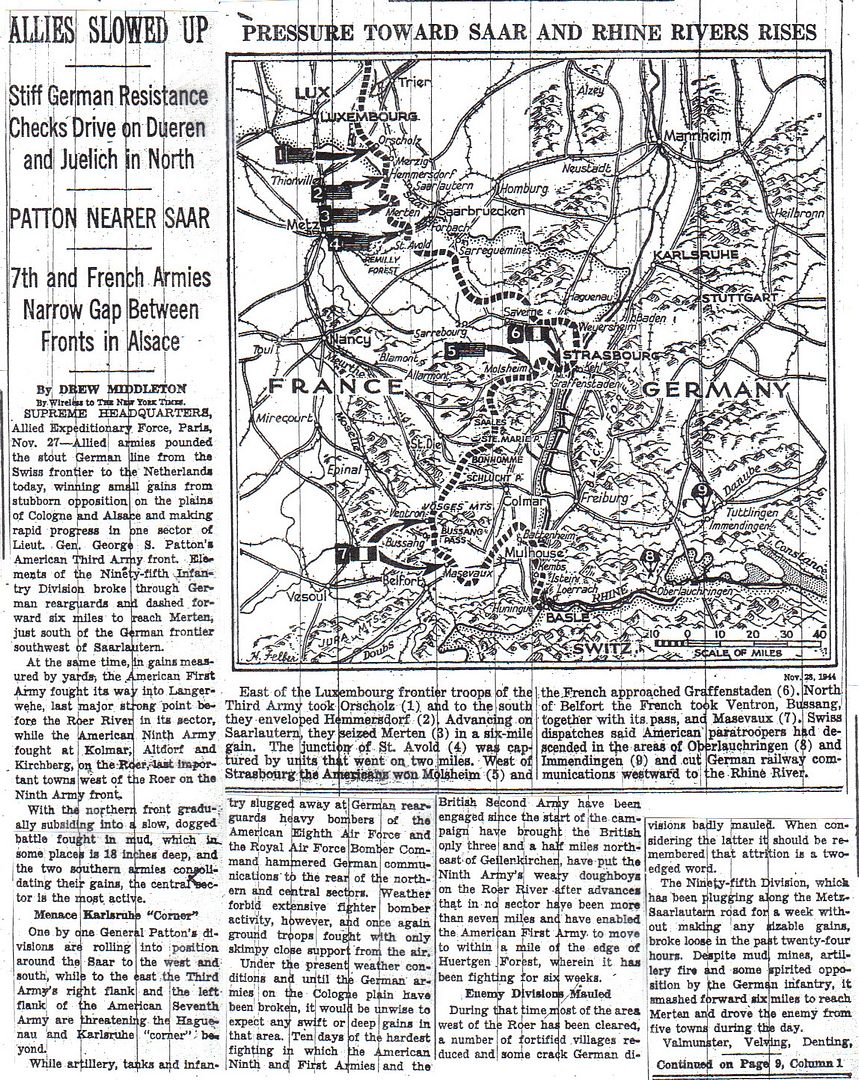
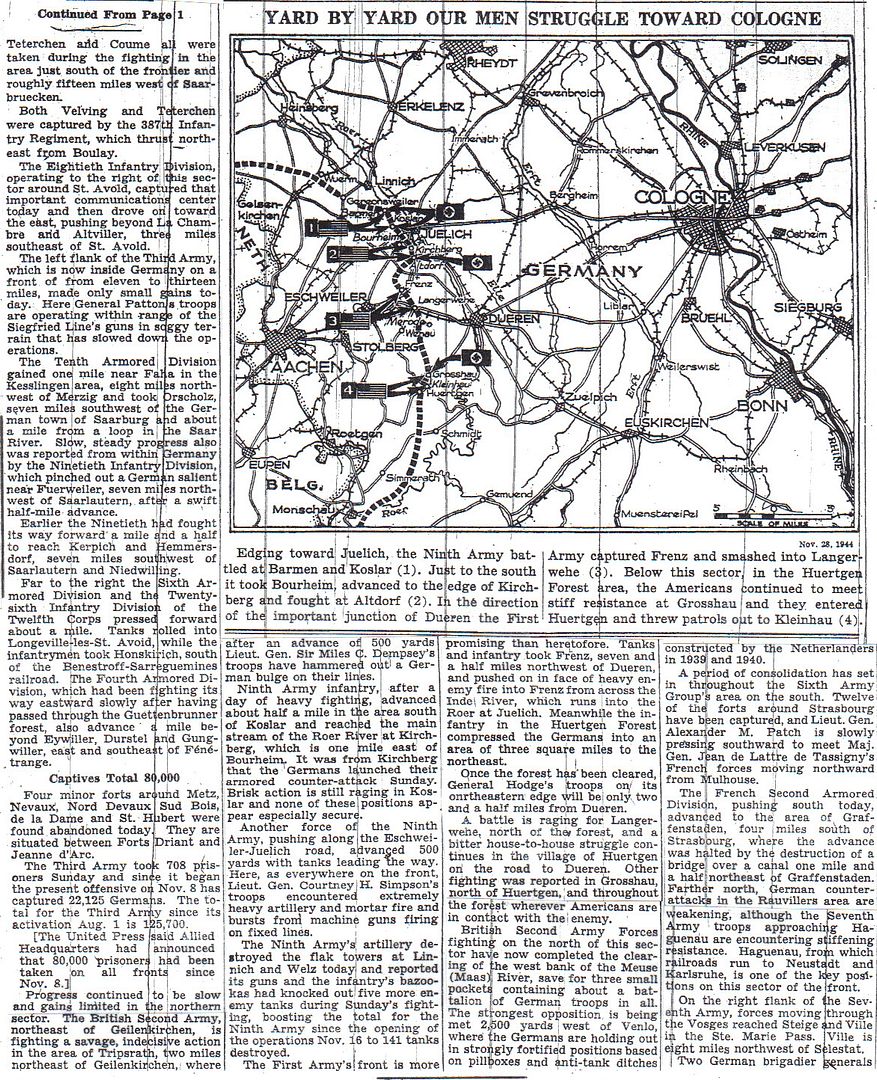
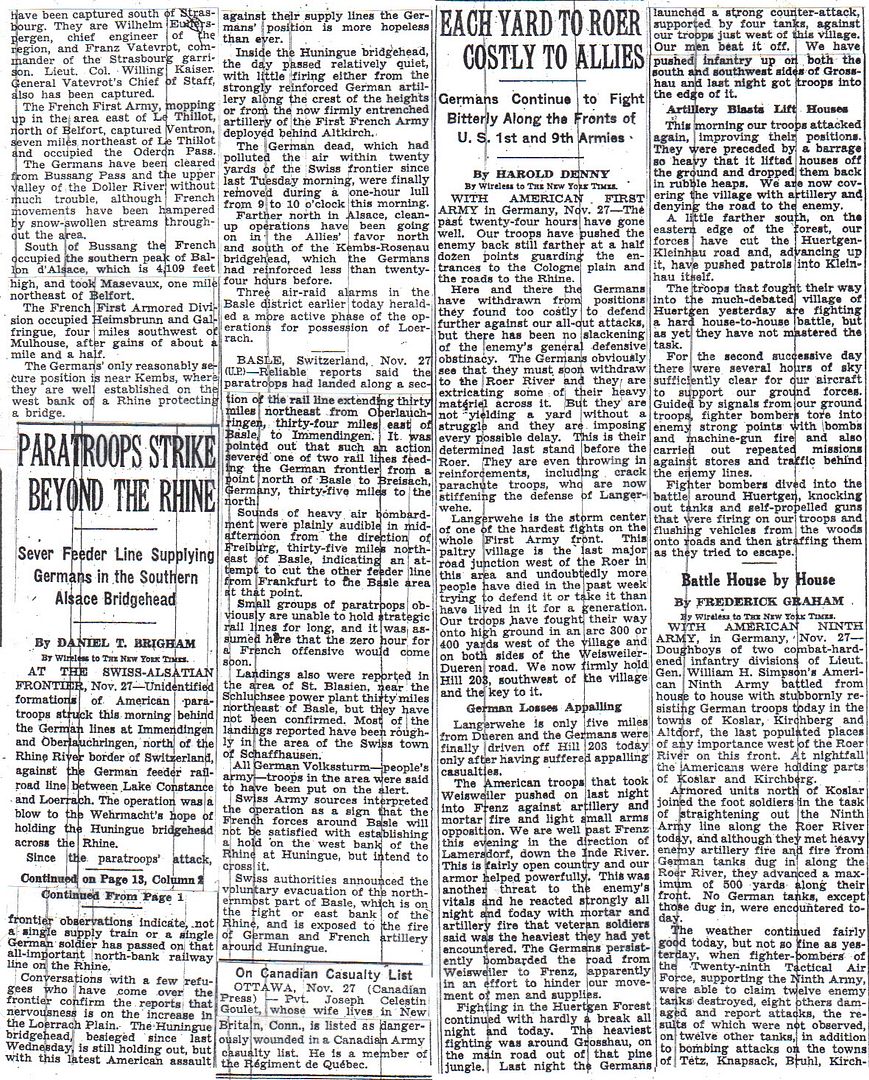
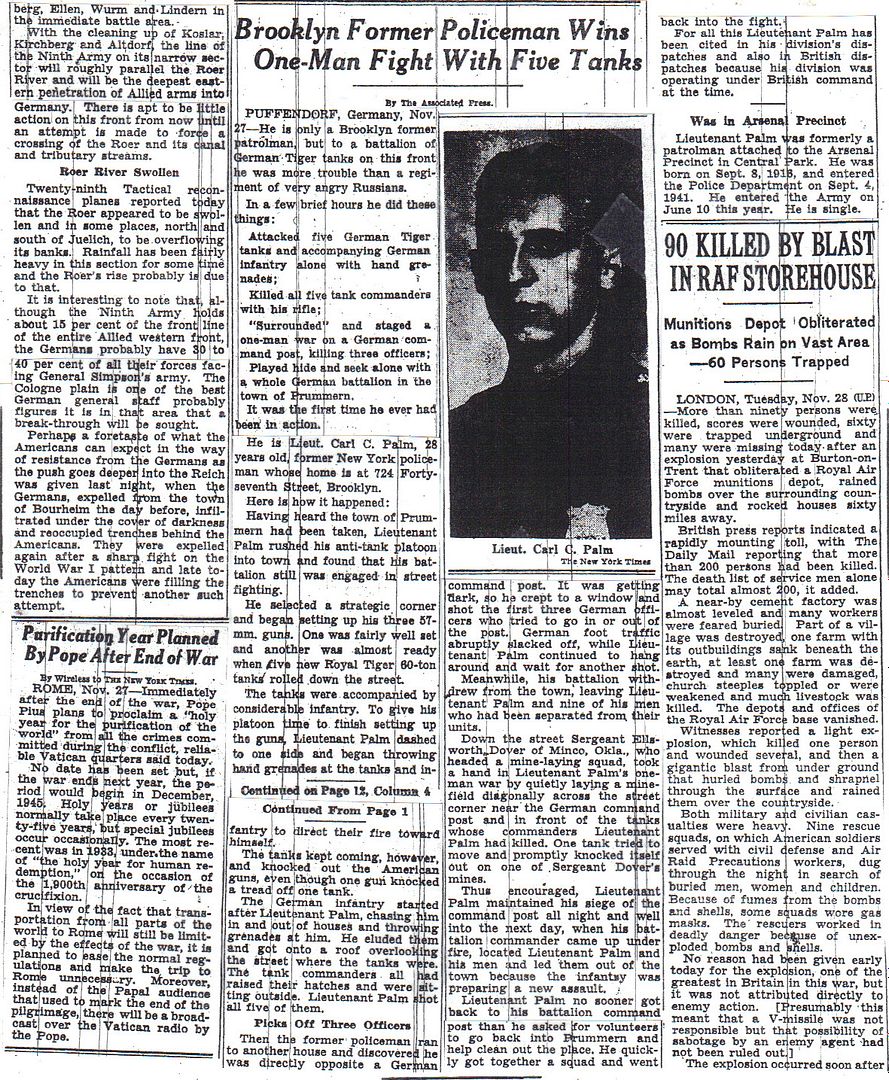
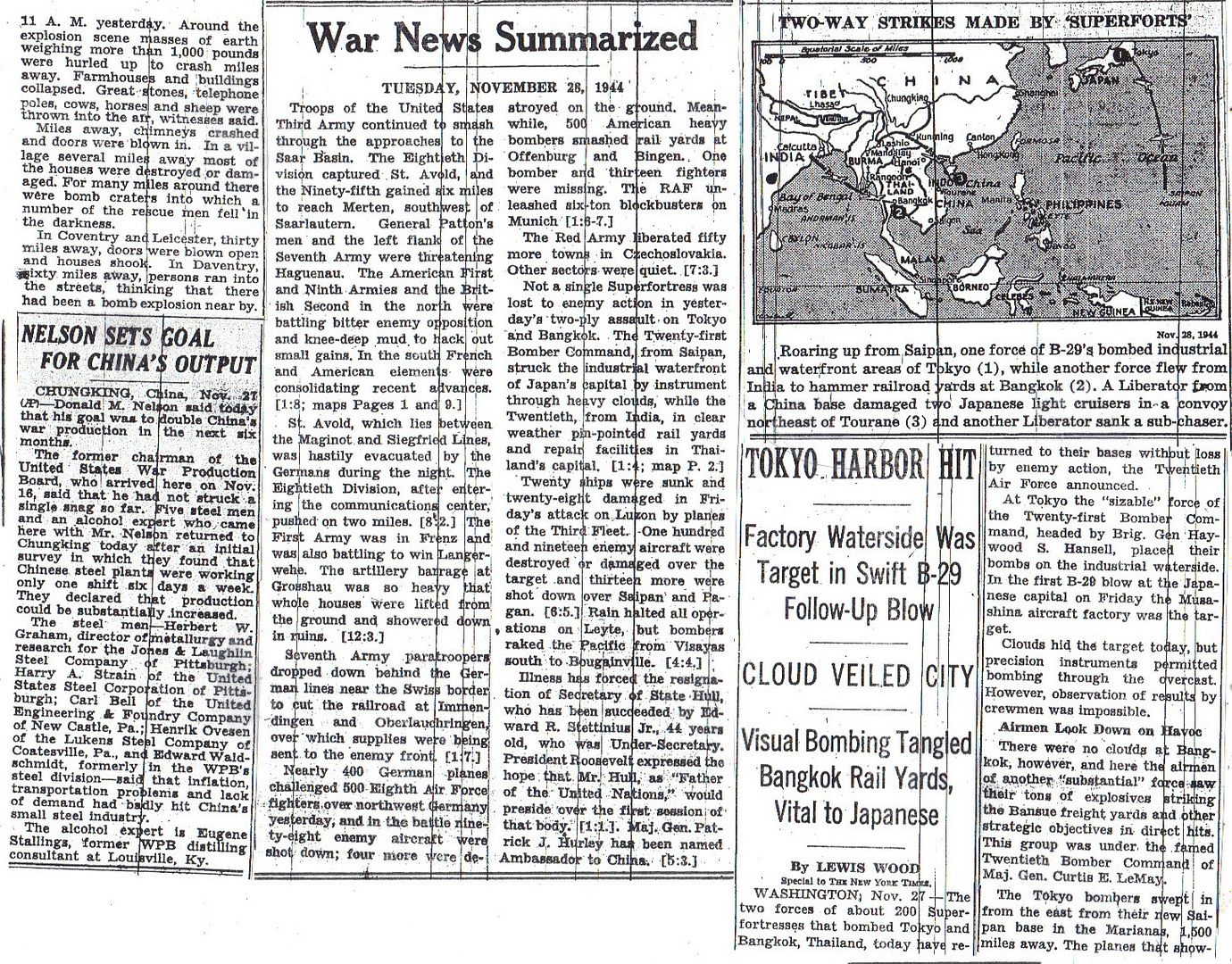
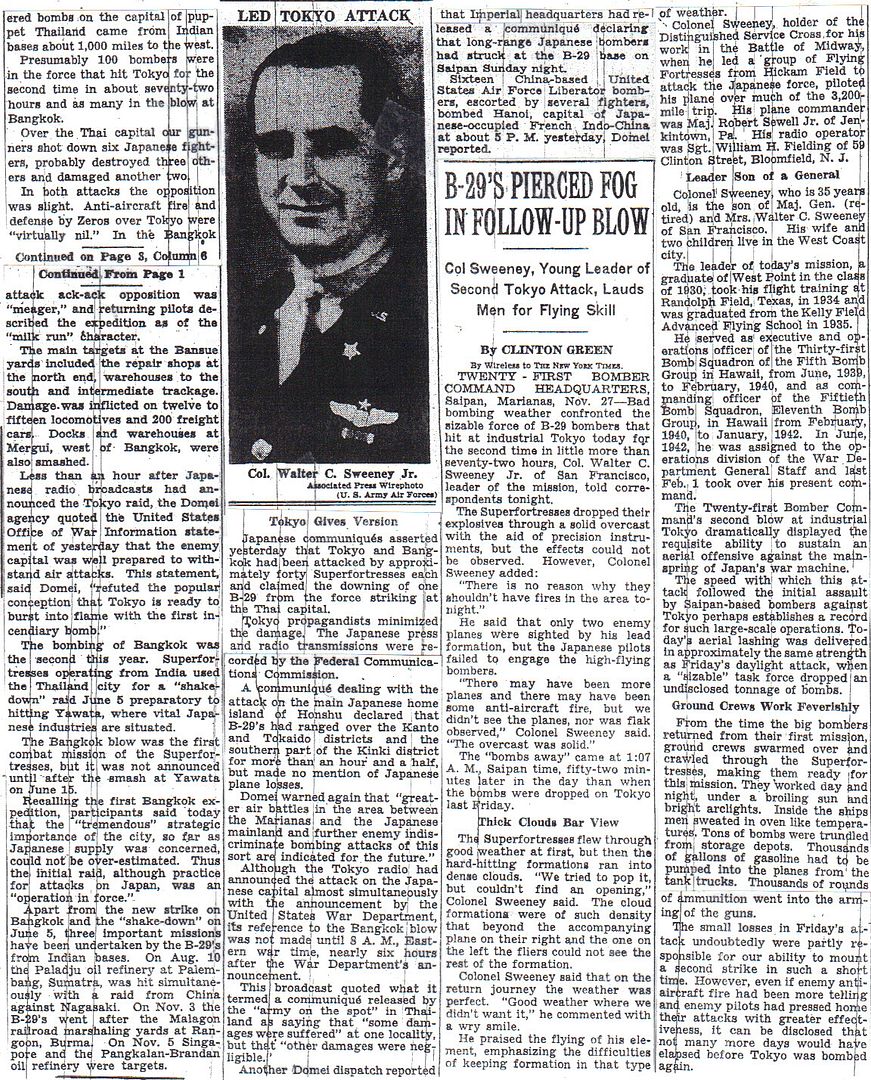
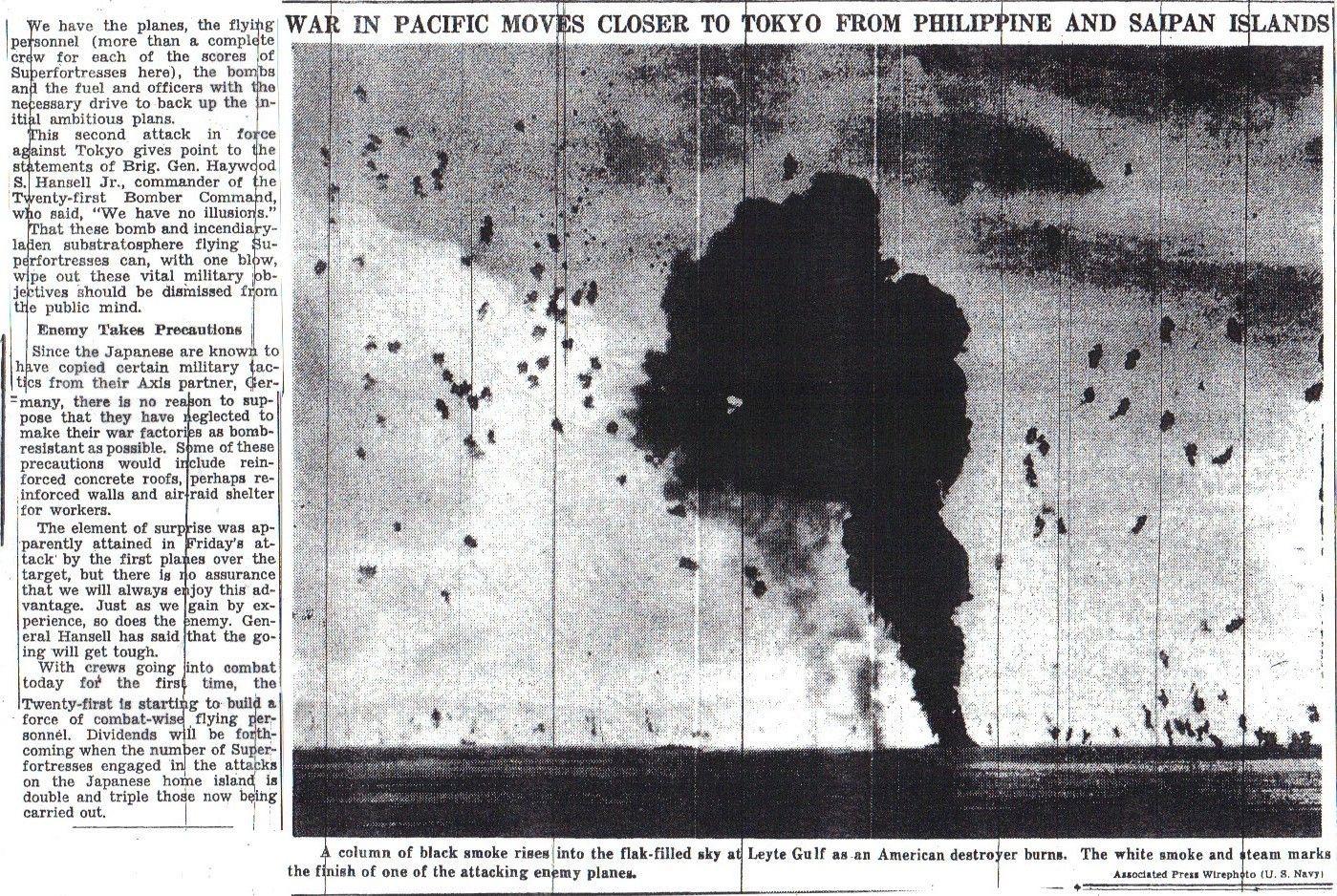
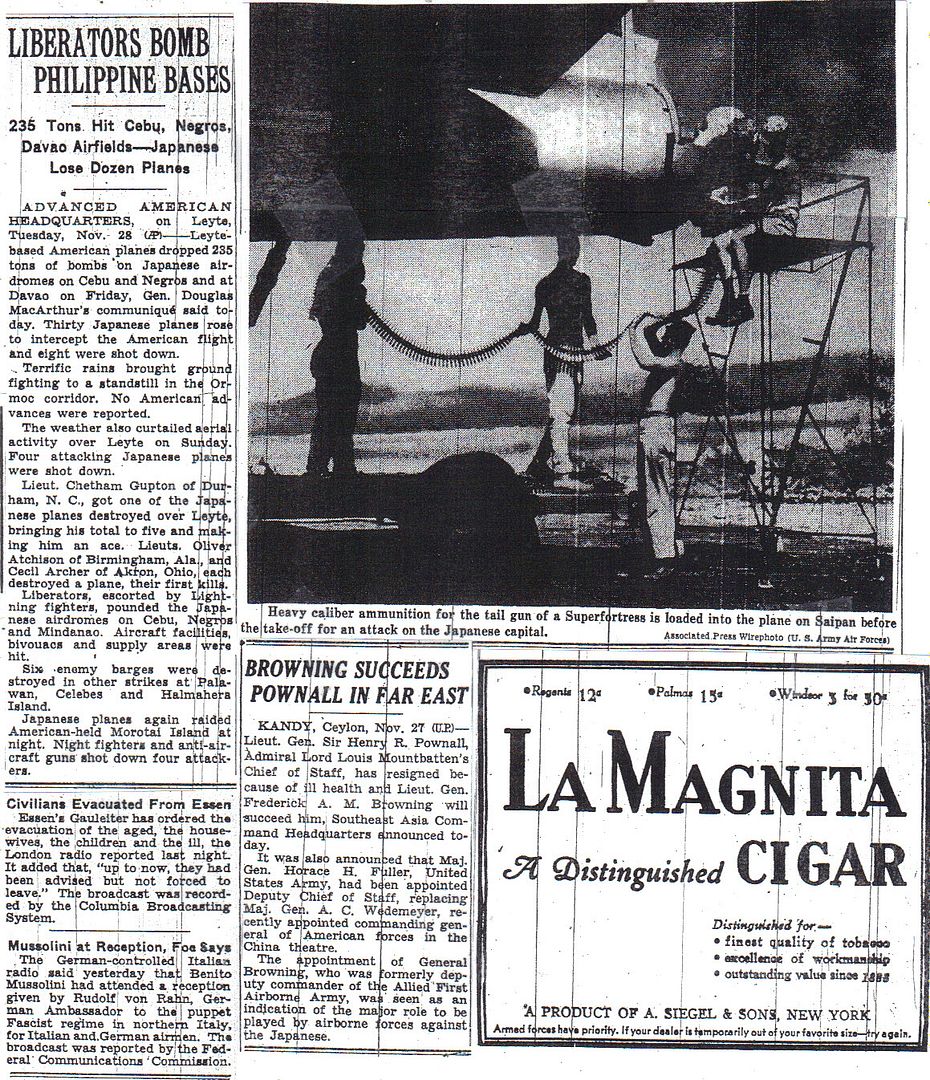

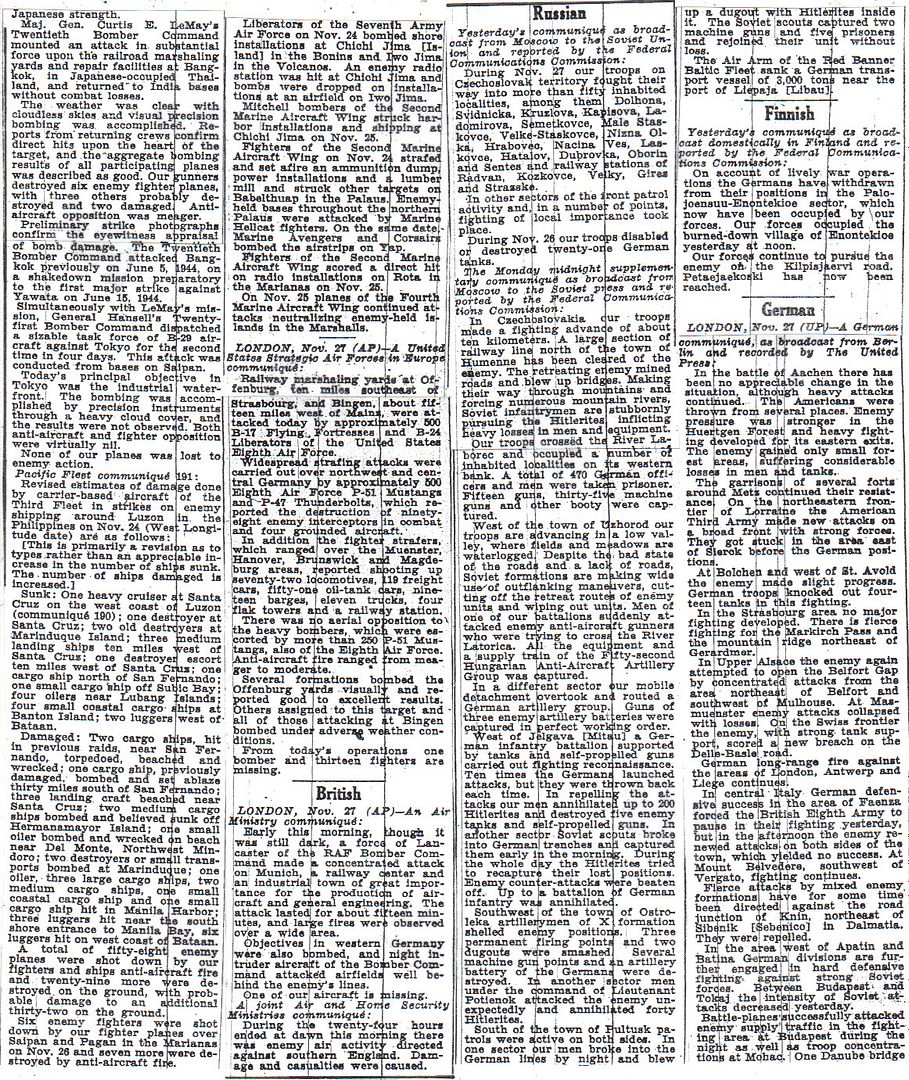
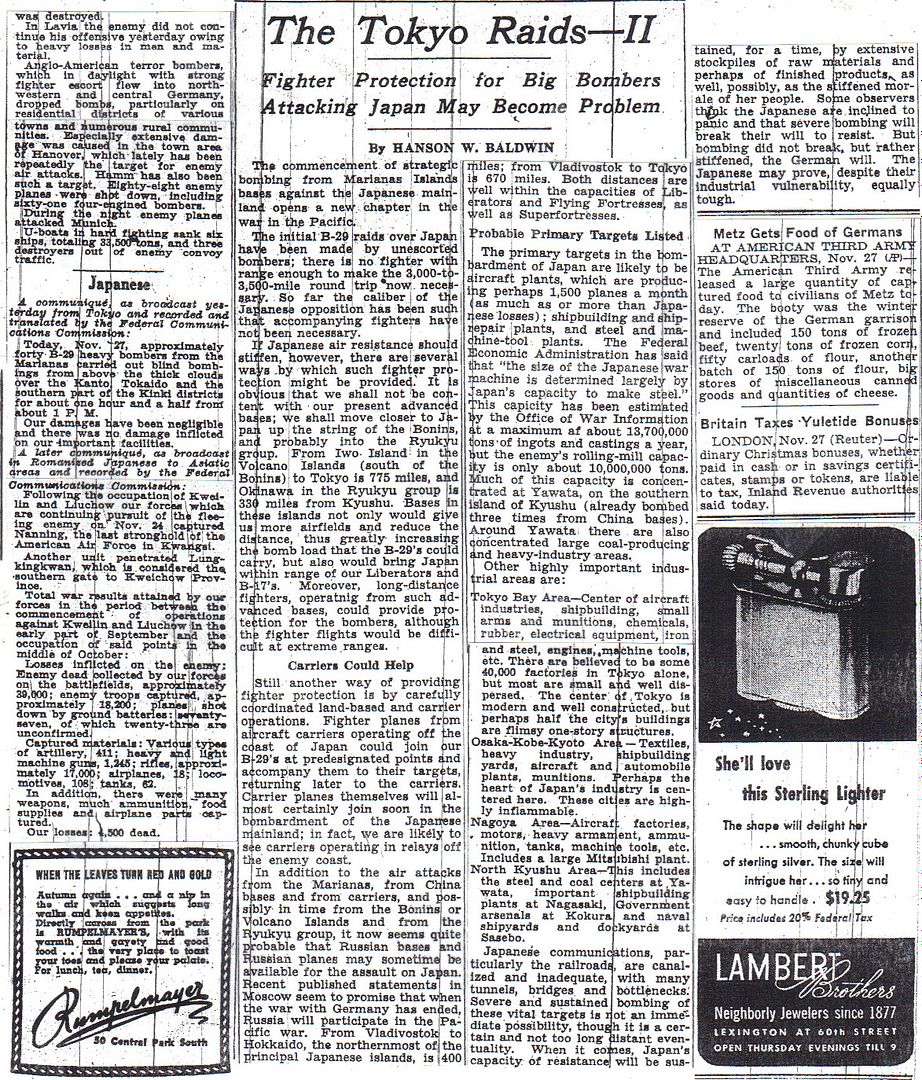
About 10 miles from where I live.
http://en.wikipedia.org/wiki/Camp_Ruston
Camp Ruston was one of the largest prisoner of war camps in the United States during World War II, with 4,315 prisoners at its peak in October 1943.
Camp Ruston was built by the local T.L. James Company under the supervision of the U.S. Army Corps of Engineers on 770 acres (3.1 km2) about seven miles (11 km) west of Ruston, Louisiana in 1942. The land was purchased for $24,200, and construction cost $2.5 million.
The camp served first as a training center for the Fifth Women’s Army Corps from March to June 1943. Approximately 2,000 WACs received basic training at the camp. Once prisoners were shipped to Camp Ruston, the WAC training center was shut down.
From June 1943 to June 1946, the camp served as one of more than 500 prisoner of war camps in the United States. The first 300 men, from Field Marshal Erwin Rommel’s elite Afrika Korps, arrived in August 1943. In 1944, the captured officers and crew of U-505 were sent to the camp and kept in isolation in a restricted area in order to prevent them from communicating to the enemy that secret German naval codes had fallen into Allied hands.
During 1944, French, Austrian, Italian, Czech, Polish, Yugoslav, Romanian, and Russian prisoners were also housed in the camp. During their incarceration in Camp Ruston, the prisoners benefited from food, medical care, and physical surroundings which were better than what their countrymen were experiencing at home. They were permitted to engage in athletic and craft activities and allowed to organize an orchestra, a theater, and a library.
Those prisoners who were enlisted men were required to work at the camp and for farms and businesses across north Louisiana. They picked cotton, felled timber, built roads, and performed other tasks to help solve the domestic labor shortage caused by the war. They were paid in scrip which they could use in the camp canteen.
In 1944, the War Department began a program to educate prisoners of war throughout the United States in academic subjects and democratic values. One source of books was the library of Louisiana Polytechnic Institute (now Louisiana Tech University). Some prisoners even took correspondence courses from major American universities.
Dizzy Trout was the father of Steve Trout, who pitched for the Cubs on their 1984 NL East Championship team. Steve Trout was known for his sinking fastball. Not really a forkball, split finger or slider, but close. When he was on, he got a lot of ground ball DPs behind him.
Today, the Japanese have begun their main effort against the Battalion, with heavy weapons and bayonet charge. They succeed in cutting off C Company and fighting continues through the night.
Have Yourself a Merry Little Christmas is an ironic song as at that time in the movie the family has had anything but. It will take on even more irony during Christmas 1944.
German treatment of Soviet prisoners was equally bad.
Thanks, this is interesting. Homer, my dad was in the 3rd Army on Dec 24, he said it was the first attack in Battle of the Bulge. In Belgium. I wonder what town? They sheltered in snow all night while shelled by Germans.
If C Company can hold on until tomorrow my father's battalion, 2nd of the 128th Inf., will arrive to reinforce them. The top map on my profile shows their path up Kilay Ridge.
According to Wikipedia, which you can access here (http://en.wikipedia.org/wiki/Battle_of_the_Bulge), the B o t B started on December 16th. Patton's 3rd Army, which raced 100 miles north to help, relieved the siege on Bastogne on the 26th.
So, perhaps the 24th was the first action the 3rd saw after arriving in the area. If you're interested, you might research the 3rd Army itself.
The German offensive got rolling on December 16/17, so I don't know about the "first attack" reference. Sheltering in the snow while being shelled was a widely-shared experience for U.S. troops during that time. Personally, I can think of lots of more fun ways to spend the holiday season. If you know what regiment your father was in I bet someone here could identify the town.
The story of Clifford's Battalion really touched me. They performed under such trying conditions he must have been an extraordinary leader.
When you said your father was on Leyte, I didn't imagine it would be here on Kilay Ridge!
There is a scene in the movie where Patton is expressing pride in his troops for being able to pull out of an offensive, move X miles and go straight into the attack.
Shinano was not completed when she sailed. A number of “minor” details were missing, such as the gaskets around the waterproof doors. And her crew was untrained; when it came to damage control, they were probably little better than a cruise ship full of tourists.
Archerfish’s torpedoes would probably not have been fatal if Shinano was completely fitted out with a trained crew. But by this stage, Imperial Japanese Navy is one of the poorer navies in the world.
Yes but the weather breaking is what really ended the German’s hopes.
Yes, “Voyage of the Damned” for all IJN vessels still afloat...
I would think that any remaining ships that had their original pre-war officers and crews intact would be extremely competent, but running low on fuel supplies and zero air cover and submarine shielding does make them sitting ducks.
Getting regular delusional orders to “Attack, attack” from Tokyo doesn’t help, either!
The capture of Limon essentially signaled the end of the battle of Breakneck Ridge, although some Japanese pockets resisted bitterly until the middle of December. “The battle cost the 24TH and 32D Divisions a total of 1,498 casualties, killed, wounded, and missing in action, as compared with an estimated 5,252 Japanese killed and 8 captured. (Cannon 225)” The cost had been great, but X Corps had secured the northern entrance to the Ormoc Valley and could now continue its push south to link up with XXIV Corps to eventually complete the eviction of the Japanese from Leyte.
“In no small measure, the establishment and maintenance of a roadblock south of Limon by the 2D Battalion, 19TH Infantry [Col. Spragins] , and the defense of Kilay Ridge in the rear of the Japanese front lines by the 1ST Battalion, 34TH Infantry [LTC Thomas E. Clifford], had made this achievement possible. Under constant fire and greatly outnumbered, these units had prevented General Suzuki from sending additional troops into Limon”. (Cannon 225)
Both of these units had been under the operational control of the 32D Division since the relief of the 24TH Division on Breakneck Ridge on 16 November. The 2D Battalion, 19TH Infantry, had maintained its roadblock from 12-23 November under extremely difficult conditions. The 1ST Battalion, 34TH Infantry had been stubbornly holding Kilay Ridge since 10 November. Both units were often isolated, constantly outnumbered, under equipped, and under supplied. Both units received Presidential citations.
Late on 27 November a patrol from the 128TH Infantry made contact with the 1ST Battalion, 34TH Infantry on Kilay Ridge to let them know that reinforcements were on the way. This was welcome news because LTC Clifford had been seeking reinforcements for some time.
CPT Harry W. Lusk, commander of Co. C, 128TH Inf., was KIA on 28 November, he was reported MIA for a while. Originally from Pennsylvania, he entered service from Eau Claire, Wisconsin. He had been WIA and earned the Silver Star ca. 22 Nov. ’42 at Buna. [added 16 Dec. ‘12]
SSG Milton Rosenstein, from Ellenville, New York, and assigned to the 126TH Inf., was posthumously awarded the Silver Star for his actions on 28 November on Leyte. He was seriously WIA and DOW later that day. More information about him and his medal can be found on the roster of Silver Star recipients. [added 1 Feb. ‘13]
The 2D Battalion, 128TH Infantry, reached Kilay Ridge on 29 November and was placed under LTC Clifford’s control. Co. G, 128TH Infantry, the first to arrive, was immediately sent to reinforce Co. C, 34TH Infantry, the most threatened unit, on the southwest end of the ridge. When the remainder of the 2D Battalion, 128TH Infantry, arrived it was initially held in reserve.
TSgt. Lloyd E. Fisher, from Newton, Kansas, and assigned to the 128TH Inf., earned the Silver Star, bestowed posthumously, for his actions on 29 November. He successfully reunited his mortar platoon with their company after they had been separated during a Japanese attack. He was KIA soon after. More information about him and his medal can be found on the roster of Silver Star recipients. [added 3 Mar. ‘14]
On 1 December, companies from both battalions attacked several knolls, believed to be key Japanese strongpoints, at the southeastern end of Kilay Ridge. While artillery and mortars from both battalions laid prepatory fire, Co. B (34TH Infantry) sent out a patrol to attempt to approach the knolls from the rear. Meanwhile Co. E (128TH Infantry) passed through Co. C (34TH Infantry) in order to directly assault the knolls, while Co. C protected its flanks with heavy machine gun fire.
“The company [Co. E, 128TH] took the first knoll easily, but heavy fire from behind a huge log on the second knoll halted Company E. Company A [34TH Infantry] sent a bazooka team forward to knock out the position and Company C [34TH Infantry] sent all of its grenades forward, but by 1320 the Japanese soldiers were still resisting all attempts to dislodge them.” (Cannon 234)
2LT John Hatlestad, Minnesota and assigned to the 128TH Inf., was posthumously awarded the Silver Star for his actions on 1 December on Leyte. He was KIA that day. More information about him and his medal can be found on the roster of Silver Star recipients. [added 28 Jan. ‘13]
No more progress was made that day and the patrol from Co. B (34TH Infantry) returned about mid-afternoon to report that it had seen no Japanese activity near its objective.
“On 1 December General Gill ordered the 1ST Battalion, 34TH Infantry (Commanded by Lieutenant Colonel Thomas E. Clifford, Jr., former All-American West Point football star), to withdraw from its position where it had done excellent work in preventing the Japanese from reinforcing the Limon Forces. His message concluded: “You and your men have not been forgotten. You are the talk of the island, and perhaps the United States. Army beat Notre Dame 59 to 0, the worst defeat on record.”
“Actually, it was several days before the withdrawal of Colonel Clifford’s battalion could be completed. The Japanese were still resisting strongly although their 1st Division had already sustained over 3,000 battle casualties. From postwar examination of Japanese records it appears that the 1st Division’s mission was not changed from attack to defense until 6 December “when it had reached the stage of collapse.” The fact that the enemy continued to operate with an offensive mission for some time after the bulk of his forces were actually on the defense probably accounts in part for the sporadic fighting, involving all three infantry regiments of the 32D Division, which broke out repeatedly throughout the Division’s area.” (Blakeley 185)
On the morning of 2 December, Co. E, 128TH Infantry, again attacked the Japanese positions on the knolls, while Co. F, 128TH Infantry, launched an assault against Japanese positions on another ridge south of Kilay Ridge. Co. E captured the knolls by about mid-day, and Co. F, after overcoming stiff opposition, gained the crest of the ridge by the end of the afternoon. Although the 1ST Battalion, 34TH Infantry, started to withdraw from Kilay Ridge during the afternoon, their withdrawal was halted until 4 December and wasn’t completed until two days later.
http://www.32nd-division.org/history/ww2/32ww2-10.html
“Some idea of the difficulties of the advance can be gained from the Army’s official history of the campaign: “Every bend of the road was lined with foxholes dug into the banks of the road and spider holes dug underneath the roots of trees and under logs on the hillsides. It was bitter, close hand to hand fighting, and because of the steepness of the terrain, and denseness of the tree growth, the inaccuracy of maps and the nearness of adjoining units, artillery and mortar fire could not be used to its full advantage in reducing these positions.”” (Blakeley 190)
“The Japanese were well entrenched on a series of ridges overlooking Highway 2. A heavy rain forest covered the ridges and the deep ravines in between. The enemy had carefully selected his defensive positions and camouflaged his machine guns, which were flanked by hidden riflemen. Targets could not be spotted beyond a range of about seventy-five feet. The employment of mortars was very limited because of the lack of visibility, and the hazards of tree burst were equally dangerous to both the Japanese and the Americans. The troops had to “approach within spitting distance of the [Japanese machine] guns” before they could locate the weapons.” (Cannon 339)
“The main Japanese defensive line had been reached. By 14 December the 32D Division had advanced more than two miles south of Limon. The 77TH Division had crushed the Cogon defenses and was in a position to drive north and make juncture with elements of X Corps. The northern and southern entrances to Ormoc Valley were denied to the Japanese. The jaws of the Sixth Army trap were starting to close.” (Cannon 328)
http://www.32nd-division.org/history/ww2/32ww2-10.html
"These bearded, mud caked soldiers came out of the mountains exhausted and hungry. Their feet were heavy, cheeks hollow, bodies emaciated and eyes glazed. They had seen thirty-one comrades mortally wounded, watched fifty-five others lie suffering in muddy foxholes without adequate medical attention. Yet their morale had not changed. It was high when they went in and high when they came out. They were proud that they had rendered invaluable aid to the main forces fighting in ORMOC CORRIDOR, by disrupting the Japanese supply lines and preventing strong reinforcements from passing up the ORMOC ROAD. They were proud that they had outfought the Emperor's toughest troops, troops that had been battle trained in Manchuria. They were certain they had killed at least 606 of the enemy and felt that their fire had accounted for many more. And they were proud that this had all been accomplished despite conditions of extreme hardship. Two hundred and forty-one of the battalion's officers and enlisted men were hospitalized for skin disorders, foot ulcers, battle fatigue, and sheer exhaustion."
The battalion received a Presidential Unit Citation.
Real Americans.
Some forget that we have not always fought with overwhelming odds on our side, and that when the going is the toughest, Americans are real sobs.
I must have missed something some where— When did Churchill become a war criminal? Why would anyone look at him that way?
The terror bombing of civilians, most notably Dresden. Churchill had the benefit of being on the winning side.
Disclaimer: Opinions posted on Free Republic are those of the individual posters and do not necessarily represent the opinion of Free Republic or its management. All materials posted herein are protected by copyright law and the exemption for fair use of copyrighted works.